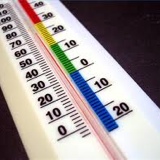Title Page
-
Site conducted
-
Inspection Date
-
Prepared by
PPE / SAFETY EQUIPMENT
PPE
-
Employees are wearing hardhats while performing railcar operations?
-
Employees use hard hat lights at night?
-
Employees are using proper eye protection for the operation being performed?
-
Employees are wearing proper hand protection for railcar operations?
-
Employees are wearing Hi-Vis with reflective stripes?
-
Employees are wearing proper footwear during railcar operations?
-
Employees use proper fall protection equipment when working on railcars?
-
ALL OTHER PPE requirements are met?
Blue Flags
-
Blue Flag signs/equipment are all in safe good condition for use?
-
Blue Flags are properly positioned during all liquid railcar unloading operations to protect affected sections of the track?
SAFETY PROCEDURES
SPOTTERS
-
All train movements have spotters properly positioned to protect the lead end of the train during blind shoves?
-
Traffic control is properly performed at roadway crossings?
-
Spotters are properly positioned to spot cars on sidings to prevent shoving past target?
-
A designated safety person is assigned to ensure all workers are clear before moving cars? (especially during liquid car unloading operations)
RED ZONE SAFETY
-
All workers keep out of unprotected red zones?
-
Workers do not cross railroad tracks within 1/2 car length of the end of the train?
-
Workers ensure at least one car length spacing before crossing between uncoupled cars?
-
Red Zones entries are only performed after proper communication with LOCO operator and LOCO brake is "set" and forward-reverse lever is "center"
CLIMBING/WORKING ON RAIL CARS
-
3 points of contact maintained?
-
Workers do not carry items in their hands as they climb ladders?
-
Workers face the direction of the climb?
-
Workers dismount one step at a time and do not jump from equipment?
-
Workers do not climb or ride on moving equipment (except opening/closing lids on grain trains)?
-
Workers only use proper crossover walkways and never step on couplers to cross over?
GENERAL RAILYARD SAFETY
-
All workers, railcars, vehicles, and other equipment are positioned far enough away from tracks to prevent them from fouling the track?
-
Proper technique is used when operating switches?
-
Workers do not cross tracks at switch points?
-
Workers do not step on rails, derails, switches, etc?
-
Workers check both directions before crossing tracks?
-
Workers do not walk between rails even for short distances?
-
Worker never crawl, pass under or between stationary railcars?
-
Workers do not wear earbuds or other headphone devices that might prevent them from hearing train movements?
COMMUNICATIONS
COMMUNICATIONS
-
Workers have adequate radios to communicate with LOCO operators?
-
Workers use proper communication to enter red zones for coupling and uncoupling cars?
-
Proper communication is given for spotting cars including a count down?
-
Workers repeat radio communications back to ensure all information is relayed correctly?
-
Hand signals are used when radio communication is not available?
RAILCAR MOVING/PARKING
RAILCAR MOVING/PARKING
-
Coupling at safe speed 4 mph or less?
-
Rail Yard Speeds Safe (don't exceed 5 mph)?
-
Horns or Signals are given at crossings if no traffic control person is in attendance?
-
Switches are inspected for the proper position prior to car movements?
-
An adequate number of hand brakes are set when parking rail cars? (minimum of 2 cars for upto 10 then min. of 10% for over 10 cars, set more if on a grade)
-
Railcars are moved in a safe manner (proper equipment used within the equipment limits for safe moving/stopping)
INSPECTION CERTIFICATION
-
Signature of Observer
-
Signature of Site Supervisor
-
Time of Completiion















